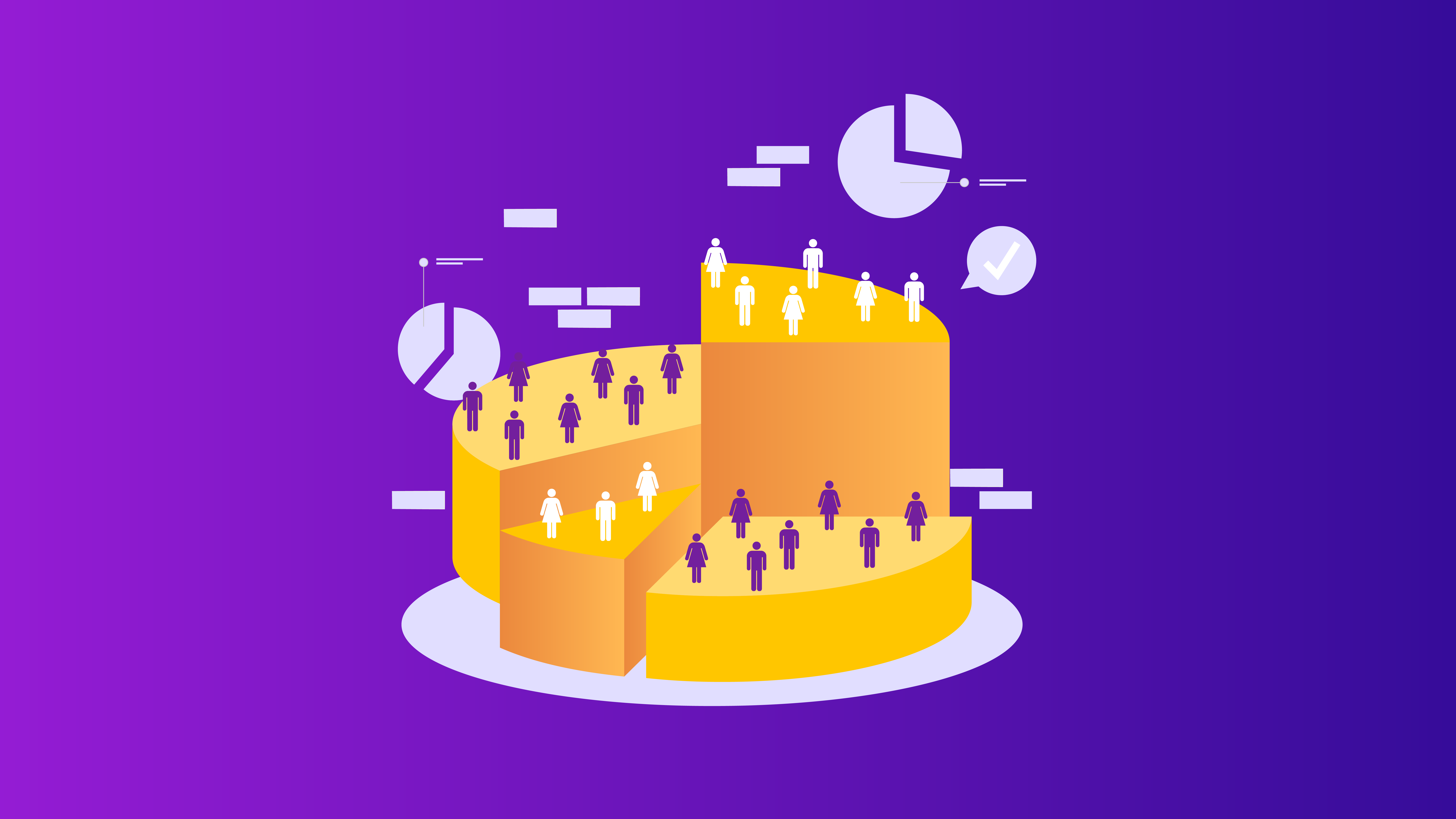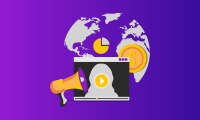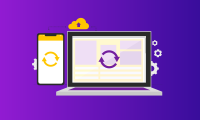5 Audience Segmentation Strategies to Improve Ad Revenue
In today’s dynamic digital landscape, connecting with your audience is paramount to success. Yet, reaching and retaining your audience requires more than just a hunch or a guess about their preferences. To truly resonate with your audience, you must embark on a journey of understanding them deeply and authentically. This journey begins with the strategic practice of audience segmentation.
In this blog, we will delve into the intricate art of audience segmentation, uncovering its importance in programmatic ads and monetization strategies. We will explore how you can group your audience based on significant characteristics and criteria, allowing you to tailor your messages, products, and services with precision.
What is audience segmentation?
Audience Segmentation is a strategic marketing practice that involves dividing a larger audience into smaller, distinct groups or segments based on shared characteristics, behaviors, and preferences. The goal of audience segmentation is to tailor marketing efforts, content, and products/services to each segment’s specific needs and interests, thereby increasing the effectiveness of communication and engagement.
Evolution of audience segmentation
Audience segmentation has evolved significantly over the years, driven by advancements in technology and a deeper understanding of consumer behavior.
1. Mass Marketing Era
In the early stages of marketing, campaigns were broad and untargeted. Advertisers assumed that a single message would resonate with all consumers, resulting in less effective outreach.
2. Demographic Segmentation
Later, marketing strategies began to consider demographic factors like age, gender, income, and education. Advertisers recognized that different consumer groups had unique needs and preferences, leading to tailored campaigns. For instance, detergent brands created separate ads for homemakers and working professionals.
3. Psychographic and Behavioral Segmentation
Over time, advancements in marketing research and data analysis led to the incorporation of psychographic factors (such as lifestyles, values, and attitudes) and behavioral data (like purchase history and online behavior) as essential segmentation criteria. This allowed for more precise targeting based on consumer characteristics and actions.
4. Digital Age and Personalization
In the modern era, particularly with the rise of the internet and digital advertising, audience segmentation has reached new levels of sophistication. Marketers now leverage algorithms and data analytics to target individuals based on their online behavior, interests, and interactions. Personalization has become standard practice, resulting in tailored content and product recommendations for consumers.
Audience Segmentation Examples for Publishers
For publishers, audience segmentation can be crucial for content creation, distribution, and monetization. Here are a few examples:
- Content Creation: A publisher covering technology news may segment its audience into tech enthusiasts, business professionals, and casual readers. They can then create specialized articles and reports to cater to each group’s level of expertise and interests.
- Distribution: Using audience data, publishers can determine the most effective channels for reaching specific segments. Social media might be ideal for engaging a younger audience, while email newsletters could work better for an older demographic.
- Monetization: Advertisers are often interested in specific audience segments. Publishers can leverage audience segmentation to offer targeted advertising opportunities, charging higher rates for ads that reach more precisely defined and valuable segments and take your website monetization to the next level.
What are the 5 types of audience segmentation?
For publishers, audience segmentation is a critical strategy to optimize content creation, distribution, and monetization. Here are five types of audience segmentation, each with its importance:
- Demographic Segmentation
Demographic segmentation categorizes the audience based on demographic factors such as age, gender, income, education, and marital status.
Demographics provide a fundamental understanding of the audience’s basic characteristics. Publishers can create content that aligns with the demographics of their readers. For example, a lifestyle magazine might tailor content differently for young adults compared to retirees.
- Geographic Segmentation
Geographic segmentation divides the audience by location, including countries, regions, cities, or even specific neighborhoods.
Geographic segmentation is crucial for publishers who wish to offer local or region-specific content. News outlets, for instance, can provide news tailored to the interests and concerns of readers in specific geographic areas.
- Psychographic Segmentation
Psychographic segmentation focuses on the audience’s lifestyle, values, interests, attitudes, and personality traits.
Psychographics help publishers understand the emotional and psychological aspects of their readers. This knowledge allows for content that resonates on a deeper level, building a stronger connection with the audience. For instance, a travel magazine might use psychographics to create content that appeals to adventurous spirits or luxury travelers.
- Behavioral Segmentation
Behavioral segmentation categorizes the audience based on their actions, such as purchase history, online behavior, engagement with content, and brand interactions.
Behavioral segmentation enables publishers to tailor content recommendations and advertising based on user behavior. For example, an e-commerce-focused publisher can recommend products to readers based on their past purchase behavior, increasing the likelihood of conversion.
- Technographic Segmentation
Technographic segmentation considers the audience’s technology usage, including devices, software, and online platforms.
In the digital age, understanding technographics is crucial. Publishers can optimize their content for specific devices and platforms, ensuring a seamless user experience. For example, a technology blog might prioritize mobile-friendly optimization for readers who predominantly access content via smartphones.
Each of these segmentation types offers unique insights into the audience, allowing publishers to create more relevant and engaging content, target specific geographic regions, connect on a deeper emotional level, personalize recommendations, and optimize the user experience across various technologies. By implementing these segmentation strategies effectively, publishers can enhance audience engagement, increase user retention, and maximize ad revenue opportunities.
What is Google Ads audience segmentation?
- Google Ads primarily focuses on advertisers who want to run ads on Google’s search engine, display network, YouTube, and other Google-owned properties.
- Google Ads audience segmentation offers a wide range of options, including demographic targeting, affinity and in-market audiences, custom audiences, and more.
- Advertisers can create and manage their audience segments within Google Ads to tailor their advertising campaigns to specific user groups.
What is Google Ad Manager Audience Segmentation?
- Google Ad Manager is designed for publishers, advertisers, and ad networks looking to manage and monetize their digital ad inventory across various platforms and websites.
- Google Ad Manager audience segmentation provides options that are often more focused on the publisher’s side. It allows publishers to target ads to specific audience segments visiting their websites or apps.
- Audience segmentation in Google Ad Manager includes options like custom targeting, first-party data integration, and ad inventory management to maximize revenue.
Why is audience segmentation important for publishers?
Audience segmentation holds significant importance for publishers, serving several crucial purposes that contribute to their overall success. Here are some key reasons why audience segmentation is essential for publishers:
- Tailoring Content
Audience segmentation empowers publishers to craft content that truly resonates with specific groups of readers. Instead of offering a one-size-fits-all approach, publishers can dive deep into the interests, preferences, and needs of various audience segments.
This tailored content approach results in higher engagement and greater reader satisfaction. When readers feel like the content speaks directly to them, they are more likely to consume, share, and interact with it. Ultimately, this leads to a stronger and more loyal readership base.
- Enhancing Relevance
Audience segmentation extends its advantages to not only content customization but also to advertising and product recommendations, amplified through the power of contextual targeting. Publishers armed with the knowledge of distinct audience segments can deliver highly targeted ads and product offers. This not only improves the effectiveness of advertising but also enhances the overall user experience.
Readers are more likely to engage with ads that align with their interests and behaviors, creating a win-win scenario for both publishers and advertisers. Additionally, personalized product recommendations can lead to increased conversions and sales, boosting revenue streams. This holistic approach also involves the integration of contextual advertising.
- Optimizing User Experience
A seamless user experience is paramount in the digital publishing landscape. By segmenting their audience, publishers can tailor the user experience to align with the preferred devices and platforms of each group.
Whether it’s mobile, desktop, or tablet, publishers can ensure that their websites and apps are user-friendly and responsive, providing a hassle-free experience for their readers. This optimization not only keeps readers engaged but also encourages them to return, contributing to long-term success and growth.
- Opening Monetization Opportunities
Audience segmentation offers publishers the opportunity to monetize their content effectively. By offering advertisers access to specific, well-defined audience segments, publishers can charge premium rates for advertising space.
Advertisers are more willing to invest in advertising when they can reach their target audience precisely. Furthermore, partnerships with relevant brands become more appealing when publishers can demonstrate a deep understanding of their audience’s demographics and interests. These monetization opportunities can significantly impact a publisher’s revenue potential.
- Optimizing Content Strategy
Understanding audience segments enables publishers to fine-tune their content strategy. They can prioritize content topics, formats, and distribution channels that align with the preferences of each segment. This strategic approach increases the likelihood of content going viral, encourages social sharing, and drives audience growth.
By crafting content that speaks directly to the interests and needs of specific segments, publishers can position themselves as industry leaders and thought influencers, attracting a larger and more engaged readership.
- Boosting User Retention
Audience segmentation plays a crucial role in building stronger relationships with readers. When publishers consistently provide content that resonates with readers’ preferences, they are more likely to retain their audience.
Loyal readers are the lifeblood of any publisher, ensuring sustained success and growth. By nurturing these relationships and catering to the unique tastes of different audience segments, publishers can foster reader loyalty, resulting in continued engagement and long-term profitability.
- Driving Data-Driven Decisions
Audience segmentation empowers publishers to make data-driven decisions across all facets of their operations. By leveraging audience data, publishers can refine their editorial calendar, marketing strategies, and content distribution efforts.
This data-driven approach increases the efficiency and effectiveness of their operations, ensuring that resources are allocated where they will have the most impact. With a deep understanding of their audience segments, publishers can stay agile and responsive to changing reader preferences and market dynamics, ultimately driving sustained growth and success.
How to create an audience segmentation strategy?
Creating a solid and unique audience segmentation strategy for publishers involves careful planning and consideration of various factors. Here’s a comprehensive guide on how to develop such a strategy:
1. Define Your Goals
Begin by establishing clear objectives for your audience segmentation strategy. Are you aiming to boost reader engagement, increase ad revenue, or enhance content personalization? Knowing your goals will guide the entire process.
2. Audience Research
Conduct in-depth research to understand your current audience. Utilize data analytics tools to gather information on demographics, psychographics, behavior, and preferences. Collect data from various sources, including your website analytics, surveys, and social media insights.
3. Segment Identification
Group your audience into distinct segments based on shared characteristics. Consider factors such as age, gender, location, interests, behavior, and purchase history. Use clustering algorithms or statistical analysis to identify meaningful segments.
4. Unique Segment Proposition
For each segment, develop a unique value proposition. Determine what sets each group apart and why they engage with your content. This could include personalized content recommendations, tailored ad campaigns, or exclusive access to certain features.
5. Content Customization
Create content that caters specifically to each segment’s interests and needs. This might involve producing articles, videos, or other content formats that resonate with the demographics, preferences, and behaviors of each group.
6. Personalization Tools
Invest in personalization tools and technology that can help automate content recommendations and user experiences based on the identified segments. Machine learning and AI algorithms can play a significant role in this.
7. User Experience Optimization
Ensure that your website and app provide a seamless user experience tailored to each segment’s preferred devices, platforms, and navigation patterns. This includes responsive design, intuitive navigation, and relevant calls to action.
8. Targeted Advertising
Leverage audience segments to offer highly targeted advertising opportunities to advertisers. Highlight the unique characteristics of each segment to attract relevant brands and maximize advertising revenue.
9. Testing and Iteration
Continuously monitor the performance of your segmentation strategy. Use A/B testing to refine content, user experiences, and ad targeting. Be open to adjustments as you gather more data and insights.
10. Data Privacy Compliance
Ensure compliance with data privacy regulations like GDPR or CCPA. Protect your readers’ data and communicate transparently about data usage and consent.
11. Analytics and Reporting
Implement robust analytics and reporting tools to track the effectiveness of your segmentation strategy. Measure key performance indicators (KPIs) like engagement rates, CTR, and revenue per segment.
Creating a unique audience segmentation strategy for publishers involves a combination of data analysis, personalization, user experience optimization, and ongoing refinement. By focusing on the distinct characteristics and preferences of your audience segments, you can enhance reader engagement, drive revenue growth, and solidify your position in the publishing industry.
In conclusion, audience segmentation stands as an indispensable strategy in the toolkit of publishers navigating the ever-evolving digital landscape. As we’ve explored, this multifaceted approach goes beyond the realms of content customization, extending its influence on advertising and product recommendations.




Leave a Reply